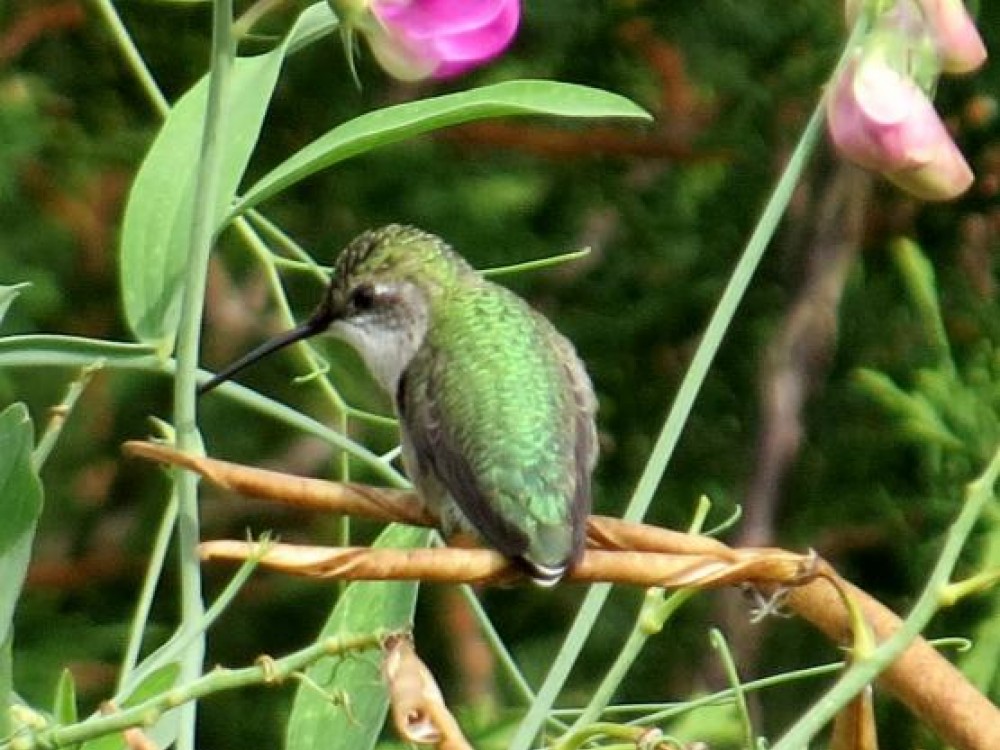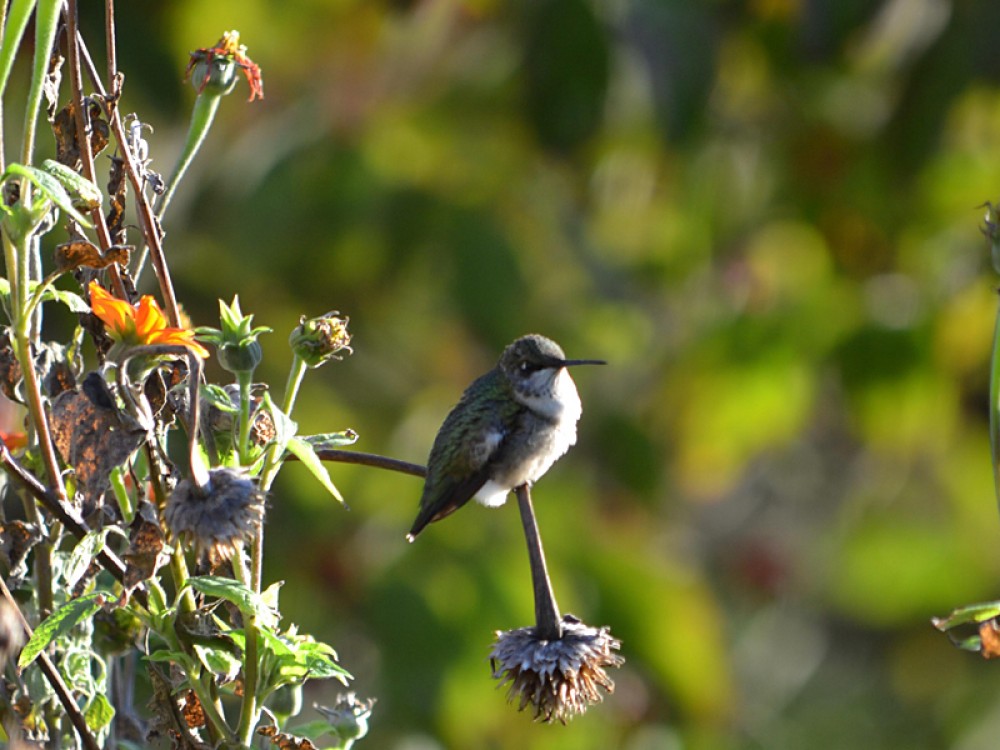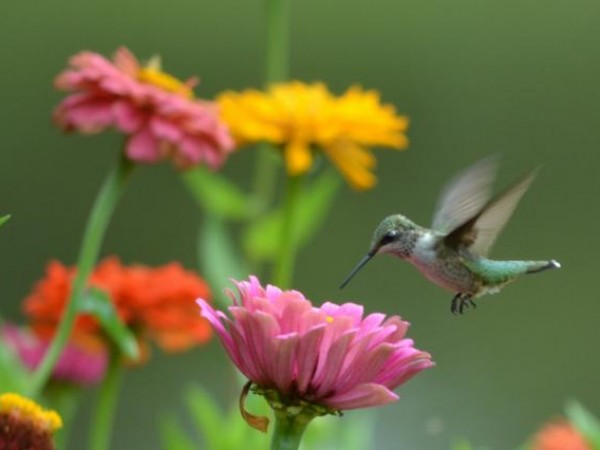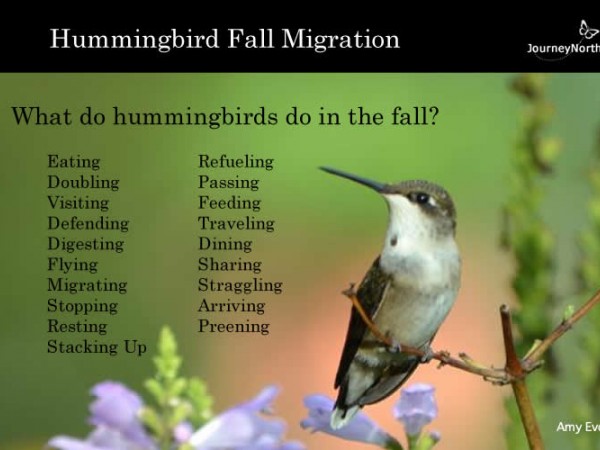Observing Fall Behavior
As summer ends and autumn nears, hummingbirds respond to seasonal changes: shorter daylight, cooler temperatures, and fall blooms. They instinctively know when to leave their breeding grounds. Fewer hours of daylight trigger hormonal changes that cause the urge to fuel up and fly south even though nectar-rich flowers are still in bloom and sugar-water feeders are full. What behaviors will you see this fall?
Report your observations as hummingbirds migrate from your backyard to their wintering grounds.

Flying and Hovering
A hummingbird can zip backward, forward, sideways, and upside down. It can even hover in mid-air to sip nectar from flowers and feeders. Photo by Amy Evoniuk
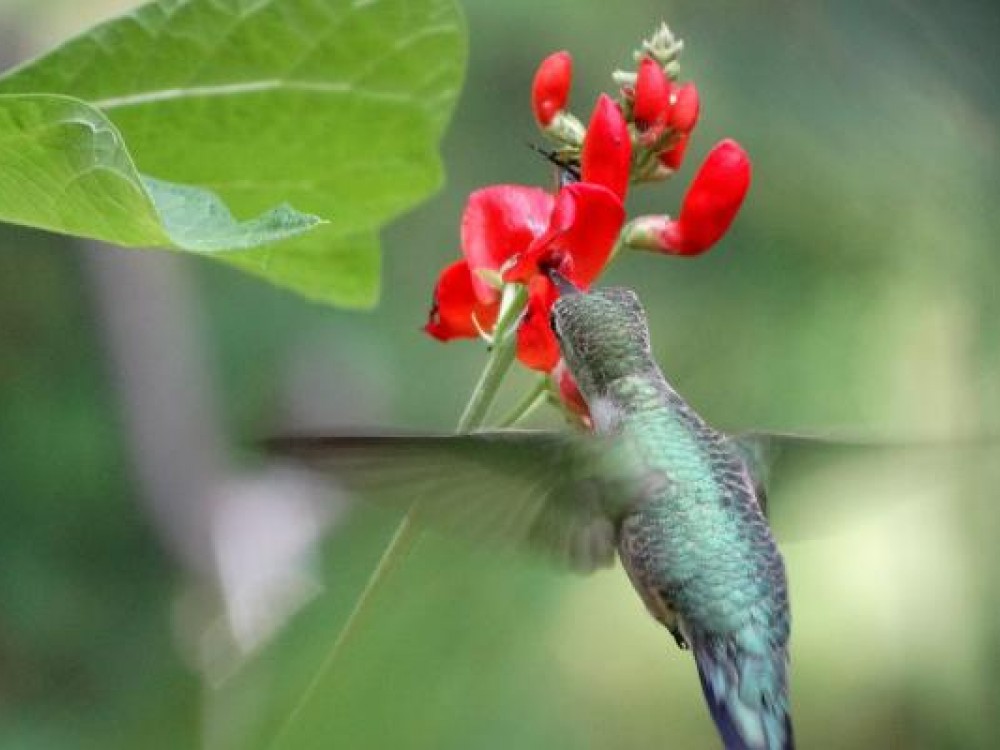
Eating for Energy
Hummingbirds feed at hundreds of flowers every day to gather enough nectar to meet their energy needs. Photo by Glenna Harrower
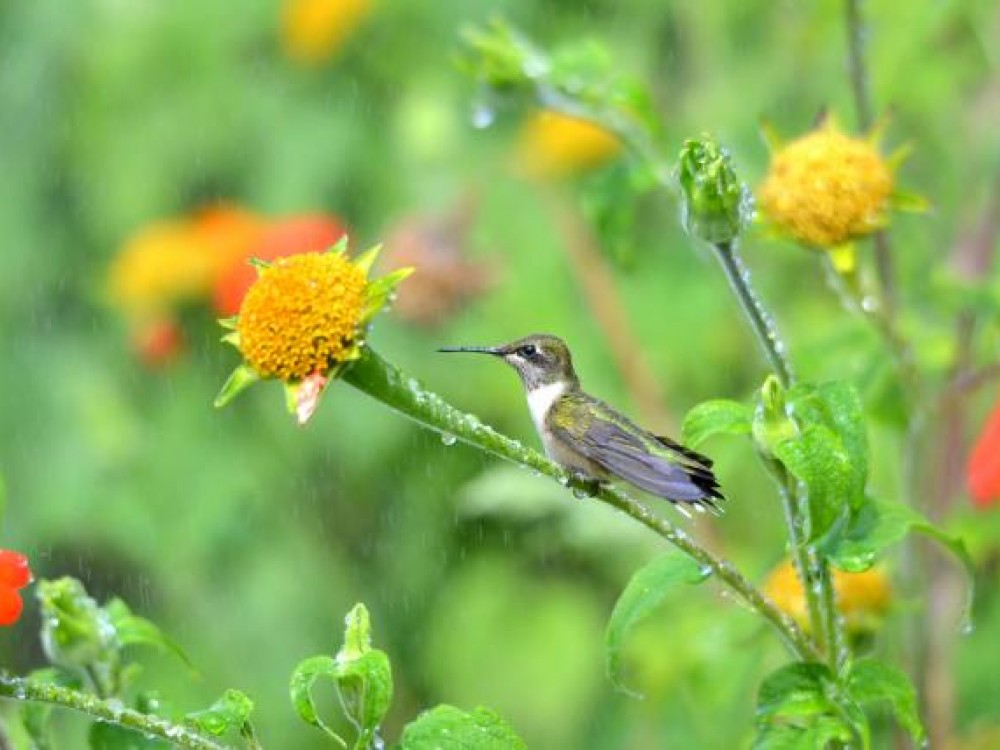
Resting and Digesting
As busy as they are when we see them, hummingbirds actually spend 80% of their day perching. They need time to digest. Photo by Bernice Ziniewicz

Guarding and Sparring
Hummingbirds are on guard and ready to battle over food. Observers describe their battle behavior as skirmishing, chasing, swooping, dive-bombing, and warring. Photo by Scott Brega

